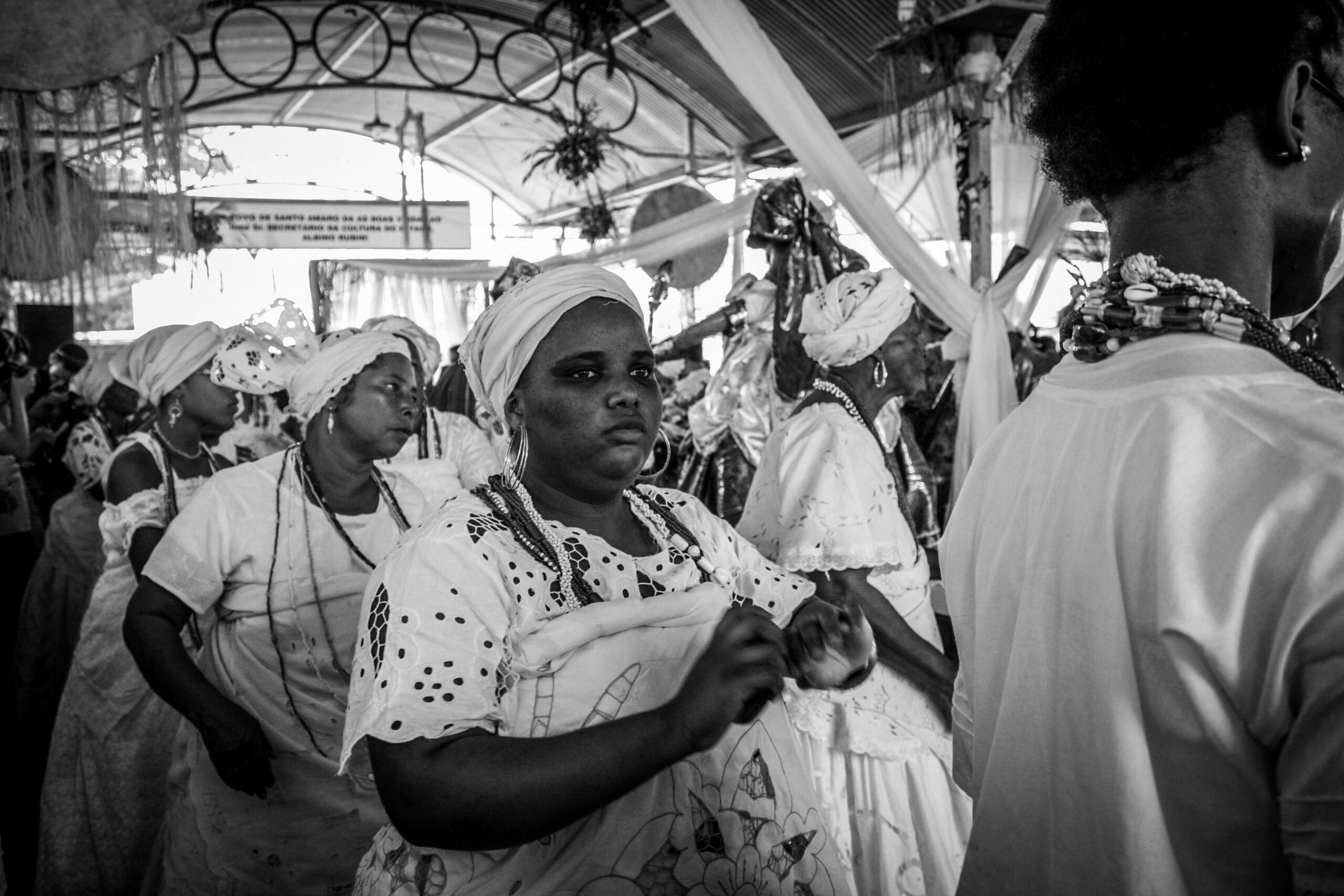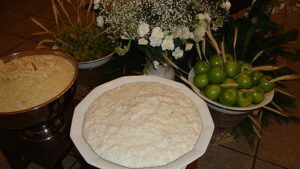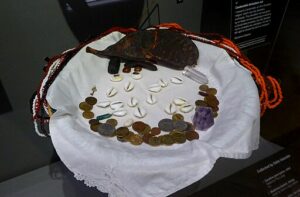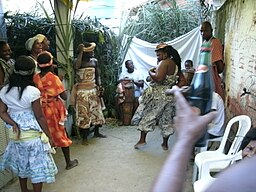May 7, 2024
The Fascinating Religion of Candomblé

Many people have never heard of Candomblé much less know what it’s about. Candomblé is an Afro-Brazilian religion, which was introduced by the Yoruba religion and it was developed during the oppressive times of slavery. It developed due to slaves being brought from their home in Africa to Brazil, and a huge number of those who were forced to Brazil were Yoruba priests and priestesses. When they arrived in Brazil, they introduced Orixas (Orishas). Sheila Walker states, “Among the Yoruba, each geographically based subgroup worshiped its own set of Orishas associated with specific environmental and historical phenomena.”1 The Orixas were the embodiment of phenomena and forces that dealt with the earth and water, but they also represented certain qualities or states that humans have. Walker also states, “In Africa the cults of some Orishas were widespread, whereas others were localized.”1 For example, Oshala is the creator of human life and Oshala is considered pan-Yoruba. Ogun is another Orixa who is the patron of iron and iron workers. Ogun taught people how to create tools from iron to help create advanced development, using nature to help meet humans’ needs. These could be considered widespread Orixas. Localized Orishas were specific to certain phenomena that happened in certain places or towns. For example, a body of water in a different area has a different name even though they are both bodies of water, but it depends on the area. As mentioned before, since they were slaves and they were brought over to Brazil, slave owners did not want to let them practice their religion, so they forced them into Catholicism. Africans were not familiar with the Catholic beings/spirits, so they used them as a way to hide behind their own spirits they believed in. Now, there is a relationship between Catholicism and Candomblé. There are some priests and priestesses who are baptized by the Catholic Church and also practice Candomblé, even though the Catholic church condemns Candomblé.

Salvador is a city well known for being the omnipresence of Candomblé in Bahia. Salvador’s population is more than 75% of African descent. Candomblé is a daily lifestyle for the people of Salvador. Today there are 1500 Candomblé houses (also called terrerios) and the more people begin to practice the religion the more houses come to life. Some people who may not have or may not look like they have African ancestry wear strings that are colored beads that represent the Orixas and those are their guides and they protect them from harm. They wear a certain color on Friday, which is a day dedicated to Oshala. Oshala created human life, and his color is white for wisdom and peace. On the streets of Salvador there are many food vending places and women who are dressed in long skirts and head ties; these women practice Candomblé. These women sell food, and the food that they sell are delicacies of the Orixas. “The most characteristic of their creations is acarajé, a black-eyed pea fritter cooked in red palm oil, that is a favorite of Yansan, Orixa of storms, whose symbolic color is dark red.”3 Sometimes, they are seen throwing acarajés in the streets to give an offering to Eshu, who is the Orixa of pathways and roads; and they throw the food in the street to make him happy so that he sends customers to their vending. Another thing that can be found is on their trays; there is a small plant called a snake plant and these can be found in front of people’s homes or businesses. The plant is known as “sword of Ogun” and it is the Orixa of war and iron, and the plant has pointed leaves so it is put in front of homes to protect the person from the evil eye and harm from other people. Each day is different for each person since there are sub-categories of Candomblé. Some people prefer to eat certain foods on a certain day of the week and avoid other fruits, and different colors for each day, and some people may decide to be abstinent so as to not provoke the Orishas and bring attention to them.4

In Candomblé, there is a hierarchy: Maes de Santos and Pae de Santos are the mother and father of the saints. They control the terriero and are the highest ranked. In Candomblé Nago, leaders pass their authority to younger people by inheritance. Someone who wants to serve as a priest or priestess has to claim that an Orisha called out to them. The reasons for this could be that they are going through a crisis in their life, an obligation to an Orixa, a sense of obligation due to family problems, or simply because they want to convert to their religion. After they confirm their calling, the future priestess begins a ceremony to become an Iao (a spouse to the Orixa). To become an Iao, you begin by overseeing a Christian mass made to integrate the Iao with city life. The process is very long and each ceremony creates a deeper relationship with their Orixa. “After seven years, an iao may need to make an abrigacaco (a dance ceremony) to receive deka, and become a senior initiate, an ebomin.”5 From there, they become a leader iyalorixa (a chief), and they are now able to have clients and be able to talk to clients and help them. Since there is a level, on the lower level are sons, daughters, and mediums who are known as filhos and filhas. To interpret communications from the spirit, and if they want, they can become priestesses later. Even though they are on lower levels, their initiation process is very intense. To begin the initiation process, they also have to be called by a spirit. If the crisis is serious, the call is more authentic. When the call is confirmed, some ritual prayers and offerings are made to the Orixa and sacred objects and on the head of the abian, who is the initiate. “The initiate gets two guardian deities, whose identity must be determined through the jogo de buzios, or ‘cowrie shell toss.’”5 The priestess’s job is to communicate between orun and aie, which is the spiritual realm and the human realm. They interpret the shells, and how they are positioned and that is how they are able to come up with final ruling from the Orixa.7

The terriero is a sacred place for initiations. There is dancing, celebrating, sacrificing, and possession. Primary initiation is called the bori (worship), and this occurs in a place called the shrine. The person is seated on a mat and dressed in a white performance costume. A white dove or pigeon is chosen as a sacrifice and is wrung, and the head of the person is covered in the blood of the bird. Other items can be put, such as nuts and food of the Orixa. During this time, they beat drums and sing songs and the ritual is three hours. The person who is being initiated also learns the songs and dances of their Orixa. During the ritual, they cut four pieces of kola nuts and use them throughout the ritual. The priests put small samples of each food on different parts of their bodies, and put small pieces on their heads while the person’s head is wrapped with a white cloth. They are isolated for seventeen days, and they are kept on a diet that is specific to them and communicate through hand claps. They are taught songs and history–personality traits of their Orixa. The second stage is when the initiate is given a necklace out of beads that are the Orixas’ colors. The person lives in isolation and sleeps on his or her mat. The only time one leaves the room is when he or she has a ritual bath and that is before and after sunset. This stage is very intense and a sense of relief comes over them whenever the next part comes: the possession, also known as ere. “At this stage, devotees form a circle and begin to invoke the deity with three chants, each of which begins with an invitation to Ogun. In attempt to coax the deity from its otherworldly domain into the profane world, devotees enter the xire ritual, known in Yoruba as sire, as a Mother of the Saints leads the parade and sings, ‘We play for Ogun oh! We play for Ogun oh!’ while daughters enter with horse-like strides in a single file, with arms outstretched, holding the reins of their invisible horse.”8 The reason for the horse-like strides is to also communicate with Exu, who is a messenger of communications. They continue chanting and each one goes, one at a time to honor their deities, men go first. The ritual is repeated until the person is possessed and makes the devotee fall into a trance. The devotees are possessed automatically almost as if they were hit by a lightning bolt. You can tell that the person is possessed by a sudden burst of energy that pushes the devotee into space, with their body frozen, while others try to prevent the person from falling on other people or getting hurt. When the person is fully possessed, they prostrate themselves in front of the mae de santo, and other people as the manifestation of their Orixa.
Candomblé is truly a fascinating religion that has very meticulous interesting details. The impact of Candomblé, especially in Salvador da Bahia, can be seen in art and graffiti and paintings of the religion. The most famous public sculptures of the Orixas are the Dique de Torroró by Tatti Moreno. “This sculptural project effectively illustrates the artistic meditation that is necessary in order to present Candomblé effectively in the public sphere.”9 Tatti Moreno’s work consists of eight beats sculptures positioned on cement that create the illusion that the deities float. The sculptures are 22 feet high, weigh two tons, and are made out of fiberglass. The sculptures represent the Orixas the ones in Candomblé Nago, and each one has a specific color as objects that are associated with a specific Orixa. Another thing is that Moreno put these sculptures in a position that makes it seem like they’re dancing, which was to invoke the possession. Projects like Moreno have given an audience to Candomblé to people who come from different backgrounds but do not give up the sacred parts of the religion.
- Sheila S. Walker, Everyday and Esoteric Reality in the Afro-Brazilian Candomblé (Chicago: The University of Chicago Press, 1990), 109. ↵
- Sheila S. Walker, Everyday and Esoteric Reality in the Afro-Brazilian Candomblé (Chicago: The University of Chicago Press, 1990), 109. ↵
- Sheila S. Walker, Everyday and Esoteric Reality in the Afro-Brazilian Candomblé (Chicago: The University of Chicago Press, 1990), 104. ↵
- Sheila S. Walker, Everyday and Esoteric Reality in the Afro-Brazilian Candomblé (Chicago: The University of Chicago Press, 1990), 103-28. ↵
- Nathaniel Samuel Murrell, Dancing to Orixas’ Axe in Candomble (Philadelphia: Temple University Press, 2010), 176. ↵
- Nathaniel Samuel Murrell, Dancing to Orixas’ Axe in Candomble (Philadelphia: Temple University Press, 2010), 176. ↵
- Nathaniel Samuel Murrell, Dancing to Orixas’ Axe in Candomble (Philadelphia: Temple University Press, 2010), 159-82. ↵
- Nathaniel Samuel Murrell, Dancing to Orixas’ Axe in Candomble (Philadelphia: Temple University Press, 2010), 179. ↵
- Heather Shirey, Transforming the Orixás: Candomblé in Sacred and Secular Spaces in Salvador Da Bahia, Brazil (California: UCLA James S. Coleman, 2009), 62. ↵
Tags from the story
Candomblé
Recent Comments
Lauren Sahadi
This article over Candomblé was very interesting to read. I’ve never heard of it and I got to learn about its origins, practices and much more. It was detailed enough to really understand what’s going on, but not too much to where it’s boring and there’s too much information. It was really fascinating to read about Afro-Brazilian religion. Really great article.
07/05/2024
9:19 am
Nicholas Pigott
Hi Ana! It’s so awesome to see an article about this, as I had recently learned of Candomble during my Portuguese class with Dr. Lokensgard. But before his class, I had no idea of Candomble’s existence, which is much too disappointing. It’s such a fascinating point of culture, joining a list of other cultural points in South America that I believe need more recognition. Great work!
10/05/2024
9:19 am
Gaitan Martinez
Wow! Never heard of this religion, but then again there are a lot of religions many haven’t heard. However, I do like learning about different religions and I don’t know why, but history, religion, and mythology are so interesting to me and usually have a relationship. The Orixas are another ethnic group that have been enslaved and forced to abandon their religion.
10/05/2024
9:19 am
Silvia Benavides
This article brings awareness to a religion that is often lesser known. I believe more studies should be made to give Candomble and more Afro-Brazillian Religions the recognition they deserve
07/05/2024
9:19 am